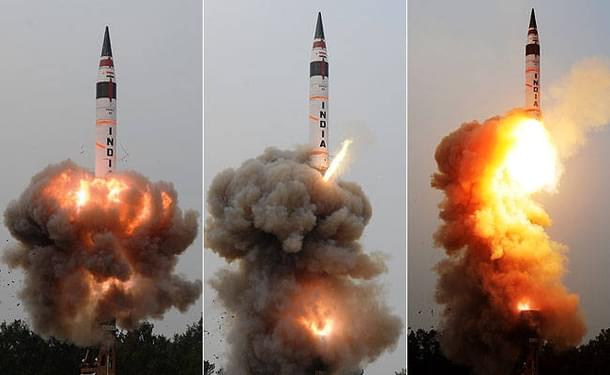Insta
India Plans To Deploy Nuclear Capable Agni-V Missile Which Covers Beijing Under Its Range
Swarajya Staff
Jan 05, 2021, 02:31 PM | Updated 02:31 PM IST
Save & read from anywhere!
Bookmark stories for easy access on any device or the Swarajya app.


With the success of 30 missions in the last three months, India plans to deploy nuclear-capable ballistic missile Agni-V this year, reports The New Indian Express.
Once inducted, the Agni-V will prove to be a game changer for India.
The long range of the Agni-V, reported to be around 5,000-8,000 km, enables India to bring all important Chinese cities, including Beijing, under threat.
With this missile inducted, India can respond to a Chinese nuclear attack with massive retaliation, as laid-out in the nuclear doctrine. Thus, the missile will play an important role in establishing the credibility of deterrence viz-à-viz China.
Defence sources told The New Indian Express that Agni-V, which is undergoing its pre-induction trials, would be finally deployed at strategic locations as selected by the armed forces.
The canisterised Agni-V provides the necessary operational flexibility to the forces.
Canisterisation enables a missile to be kept in a state of readiness, makes camouflaging the missile easier and permits rapid launch.
Being placed on a road-mobile launcher, the missile can be moved from one location to another in times of heightened conflict to avoid detection by enemy satellites. This, in turn, increases its survivability in a preemptive counterforce strike.
Agni-V is a solid-fueled missile. Solid-fueled missiles offer the benefit of a quick response and longer storage life. Prearranging a liquid-fueled missile for launch, in comparison, takes more time.
Also, in case of non-use, liquid fuel must be drained out from the missile due to its highly corrosive nature and stored separately. Therefore, it is easy to store and transport a solid-fueled missile.





